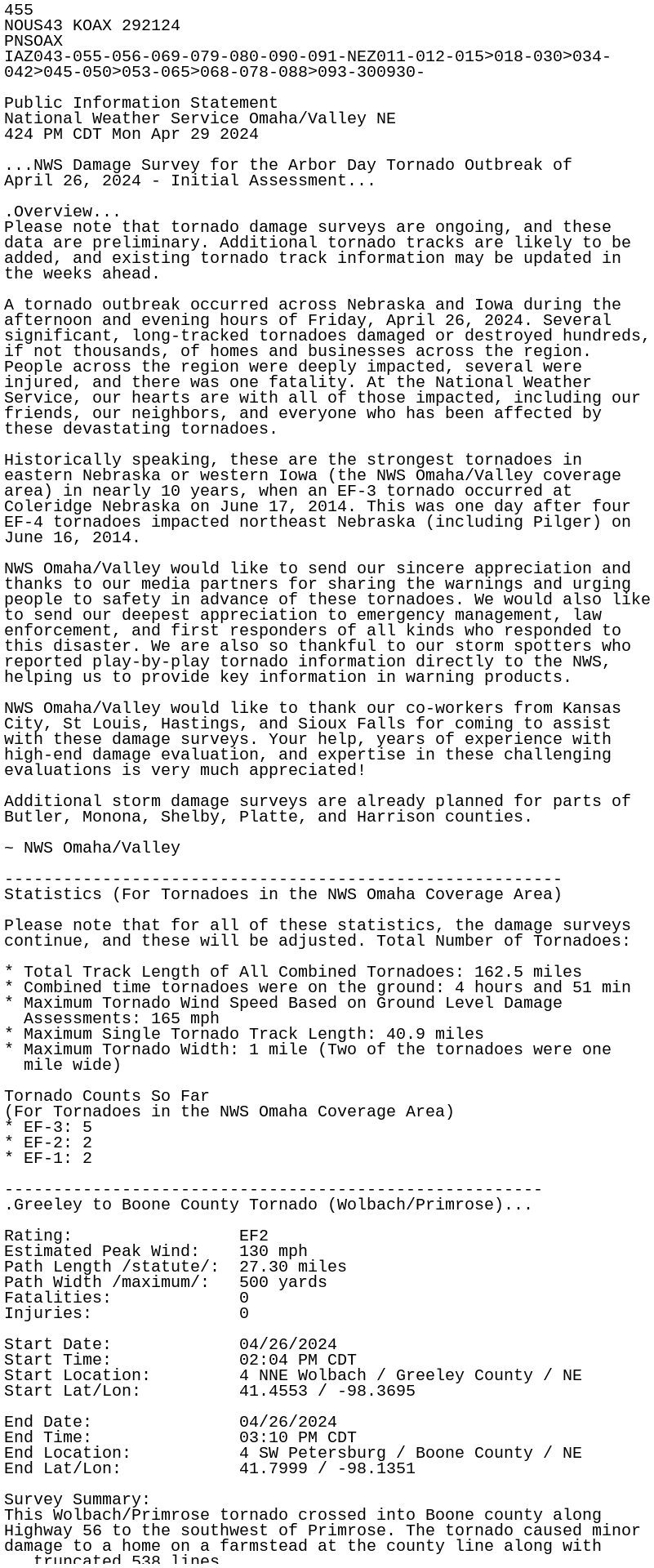Some offices do better than others when it comes to the narrative on damage surveys. OAX and DMX tend to do pretty well, IMO, whereas some of the OK offices (OUN is a big offender) often have much less narrative, or none at all. The narratives from OAX are pretty insightful. The number of times they note that a new tornado began before a nearby one dissipated seems anecdotally unusual in my memory. While cyclic tornadic storms are far from uncommon, having the distance between cycles be so short seems uncommon.


